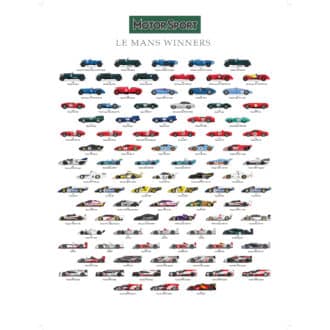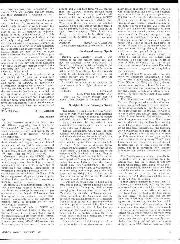
An MG-C Club
—And Against Sir, I was interested to read the letter from Mr. Willmer suggesting that it would be "irresponsible" to form another MG Car Club. A myriad already exist within…
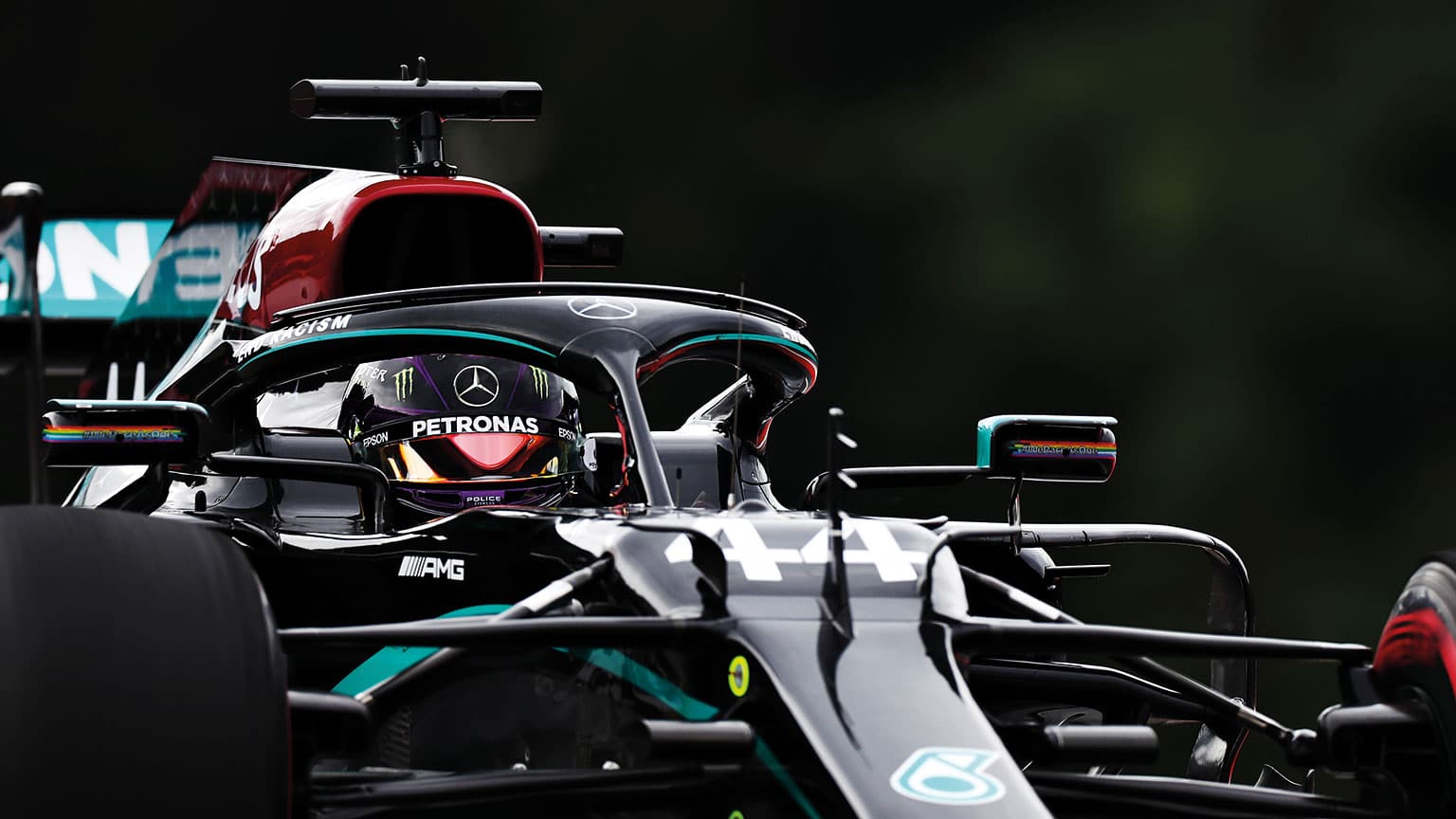
A new black livery, but will it be the same old story of domination for Mercedes and Hamilton?
So perhaps the strangest, most dystopian season in the sport’s history begins. But regardless of the surreal circumstances of the outside world in which F1 has to exist, its life force remains – and here we are at the beginning of what should be a truly fascinating contest. Consider, the participants don’t even know how many rounds the championship will comprise. Even as they are fighting it out, they don’t know when the music will stop, which somehow just lends the whole thing its fuzzy, irresolute tone. There are going to be so many dimensions to the story of this season, rapid-fire from all directions. So, as the circus rolls into town and puts on its show without folk being allowed to come and see it, what are the questions framing those storylines?
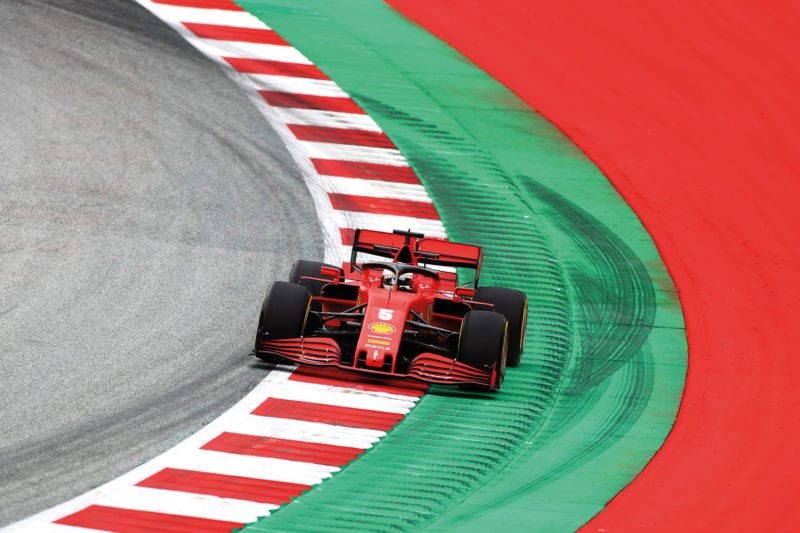
The opening races haven’t gone well for Ferrari, or Vettel, who has struggled for pace and endured clashes. He’s yet to score a point
Getty
Behind the scenes during the three months of inaction since the cars were packed back into their crates at Melbourne without having run in anger, there has been frantic action. Staring penury in the face, Liberty, the FIA and the teams have been incredibly cohesive in trying to plan their way around the situation considering the crazy high-wire the sport has always perched itself upon, fuelled by competition and addiction. One of the measures devised to keep the whole hive intact has been to delay by a year the introduction of the all-new aero formula – and that’s actually a real sacrifice from Ferrari for the greater good.
Because this year’s SF1000 is modelled very much on last year’s flawed SF90. To do an all-new concept was deemed not worth it for just one season. Except that’s turned out now to be two, as the same monocoque by regulation must be retained through to the end of 2021. In hindsight, Ferrari’s technical department might have chosen an all-new concept of car based around the needle nose and outwash front wing combination that seems to have established itself as the best solution to these regs. Instead, it has a version of a car that last year could only sometimes run an aero balance most appropriate to the track in question. Is that trait just fundamental? Is the only way of running it with a good front end aerodynamically inefficient? That’s a key question from its performance pattern during both pre-season testing and a tough first outing in Austria. It had much better low-medium speed performance, reported both Sebastian Vettel and Charles Leclerc – but it was losing a lot of time down the straights. That’s pretty much the opposite of the traits of last year’s car, but it could well be just a different expression of the same limitation.
That situation has almost certainly not been helped by a series of Technical Directives relating to fuel flow, building on that introduced in Austin last year. Rivals remain convinced the Scuderia had derived its power advantage from ‘gaming’ the fuel flow meter and even though the FIA couldn’t prove it, the latest TDs have shut off the possibility of it being done the way rivals believed. Wouldn’t it be just stunning if the Ferrari power advantage was more evident than ever? But it certainly wasn’t apparent in testing – and at the Red Bull Ring we saw a car nearly a second slower than last year’s, and only a stellar performance by Charles Leclerc allowed Ferrari to leave the first race with anything close to creditable.
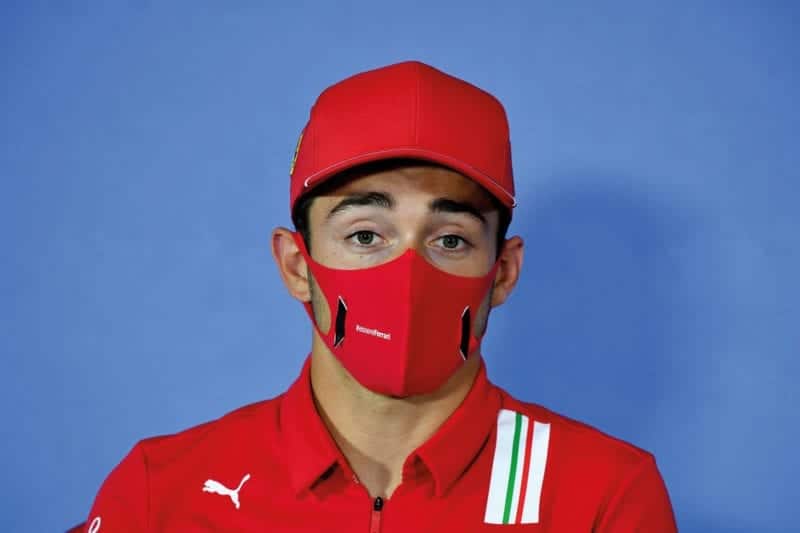
Charles Leclerc put in a fine drive to second place at the first race in Austria but promptly undid the good work by taking out teammate Vettel in the second.
Getty
An aerodynamic shortfall and the evaporation of its power advantage doesn’t set up the season perfectly for Ferrari. But this is Ferrari; you just know it’s going to force itself into the mix somehow. You also know there are going to be flash points of emotion; that’s just how they roll. That volatility is probably going to be magnified this year, given that Vettel knows this is his last season with the team, that it’s chosen to replace him for ’21. Recall how disinterested he was in complying with team wishes in Sochi and Brazil last year? Imagine how he might be now – with a very big point to prove against the barometer of the new chosen one. Just one of a rubric of challenges for team boss Mattia Binotto to manage this year.
“He must be good at managing an objectively difficult and unusual situation,” agrees Piero Ferrari, “given that the driver will leave at the end of the season. I don’t know how my father would handle the situation, but he always said that the company matters more than any employee, even more than the best driver.”
All that said, Leclerc is one very tough cookie beneath the charming exterior – and possessed of enormous talent. Maybe he wasn’t consistently at the level of Hamilton and Verstappen last year, but his best stuff was outrageously good. If he can stay on the tightrope in hooking all those bits together, F1 may even be looking at a new standard- bearer. This is a sensational dynamic with a script that will be even more electrifying if the car is a potential winner. Then we’d have Vettel – freed from the conflict of driving within team-dictated constraints – on a mission to steal a championship before departing. It would be the best finger he could possibly give to the team that never really loved him.
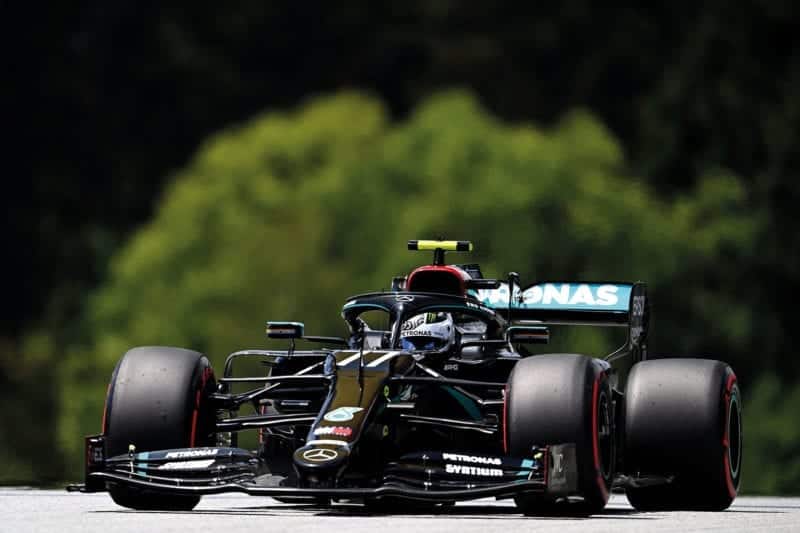
Mercedes ran away with much of the first race, until Hamilton was penalised, allowing Bottas to steal a march
Getty
Team love isn’t something that Lewis Hamilton need worry about at Mercedes as he chases that record-equalling seventh title, having already surpassed most of the other Schumacher records of achievement. He’s the obvious pre-season favourite but there are so many ways it might go in this quick-fire, uncertain scenario. In the world’s travails of the last few months he’s risen above the sport and its corporate sheen and spoken eloquently on bigger issues, obliging F1 to follow his lead. He could be pretty much anything he wants to be at this moment in his life. Which fork will he take? And can he summon up the same intensity and focus as before at the track? The next generation are lining up now to knock him off his perch and it will happen eventually. Just not necessarily yet. The Merc W11 is a stunning bit of design – its rear suspension alone shows the bold creativity still coursing through the team – and was the quickest thing both pre-season and around the Red Bull Ring. But there’s another one on the other side of the garage. Valtteri Bottas’ mentor Mika Häkkinen would say this, wouldn’t he, but it has a ring of belief: “He’s a mega-great driver. I am confident that he is better than ever, so I have an extremely high expectation for him to be world champion this year.” And he certainly started well with victory in Austria, holding off a stumbling Hamilton for the race distance. The warning signs were there, however. Last year, with just a little bit of luck, Bottas could have been 5-0 up on Hamilton after the first five races. Get to five races this year and we may already be halfway through the season. That’s stretching a point, but the performance is within him.
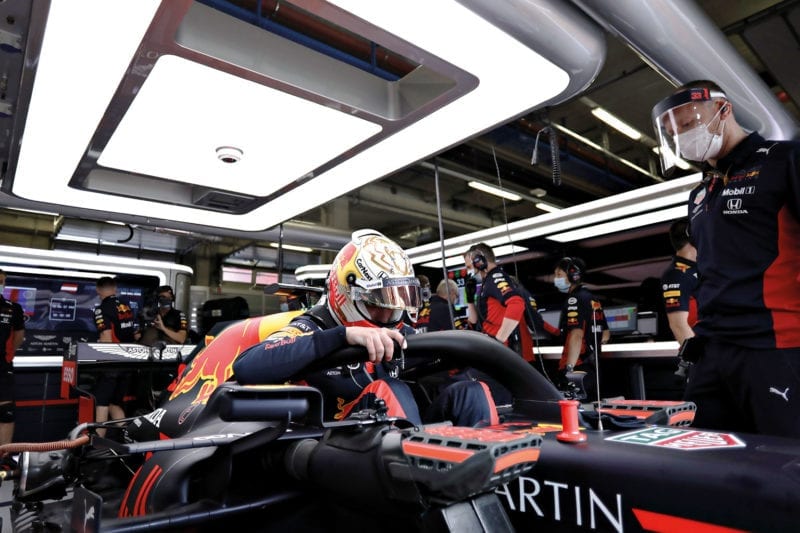
Max Verstappen will be in the hunt this season, and was only prevented from battling for the first win by an electrical gremlin
Getty
The expectation however is that Hamilton’s chief opponent is going to be Red Bull’s Max Verstappen. The post-testing gung-ho stance coming from both the Red Bull and Honda sides of the equation – absolutely confident they would be in the title hunt – wasn’t really backed up by the car’s form on-track then. But the package looked quick in Austria – while it lasted. Both Verstappen and Alex Albon could potentially have beaten the Mercs, but both were let down by electrical issues, perhaps arising from the rattling use of Spielberg’s vicious kerbing.
As the engine factories of Mercedes, Ferrari and Renault were all on shutdown, Honda took advantage of an FIA allowance ‘for factories based in countries where law and/or unions impose different closing conditions’ to delay its shutdown until later in the year. Which has allowed it to bring a significantly upgraded spec of power unit to the beginning of the season. Subsequent to that allowance, the FIA introduced cost-cutting measures that limited the amount of power unit development work that could be made during the season; the combined effect is that Honda may have stolen a march.
Honda’s F1 R&D chief in Sakura, Yasuaki Asaki, recently proclaimed: “My goal is to win in a situation where either Mercedes or Honda can win. I am excited and anxious about the goal – to be champion.”
The RB16 represents a fundamental reappraisal of some aerodynamic concepts for Red Bull – necessitating the sort of big re-engineering job that Ferrari shunned. The move away from the wide nose to a Mercedes-like needle nose should keep the airflow supplied to the underfloor more energised at low cornering speeds. But it has required the steering gear and reservoirs to be moved behind the nose’s bulkhead – which in turn would appear to make it impossible to emulate the Dual Axis Steering (DAS) system introduced by Mercedes, whereby the toe angle of the wheels can be altered by moving the steering column up and down. Which is almost certainly why Red Bull is so animated about that technology and its legality.
Should the RB16 and W11 prove well-matched through the season, this is going to be a truly fascinating dynamic. Not only will that directly pit the king and pretender properly against each other for race after race, building upon the thrilling but intermittently spaced duels we’ve seen from them so far, but the respective qualities of the two teams will come into sharper focus. Mercedes has that all-round, scientifically-driven competence in every area and has just got better and better at winning races, sometimes even on those rare occasions when it hasn’t had the fastest car. But Red Bull is sometimes sharper in improvising a new answer to changed circumstances. There may be something about the intense thick-and-fast, no-time-to-think, way the season is poised which suits that quality. And if it can pressure Mercedes through pure performance, how will the latter react?
After Austria and Hungary – where Max Verstappen took pole and fought for the win last year – the fast, flowing expanses of Silverstone will give us a fuller picture of the respective traits of the two cars. Just as with Austria, the British track is hosting grands prix on two consecutive weekends, albeit behind closed doors. So, we have a Styrian Grand Prix in Austria and a 70th Anniversary Grand Prix the week after the British Grand Prix (surely F1 missed a trick in not calling the repeat venue races the Niki Lauda Trophy and Stirling Moss Trophy respectively?).
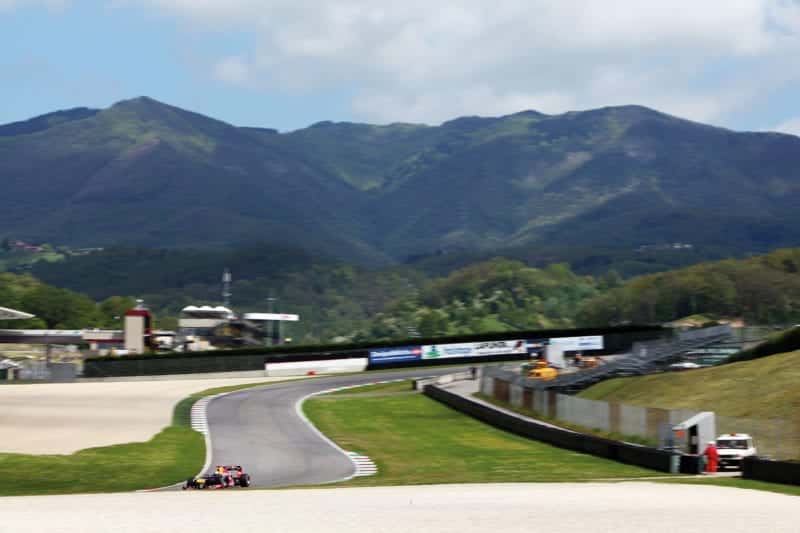
The picturesque Red Bull Ring played host to the first two races of the year but, even with home Tarmac, Red Bull couldn’t quite match Mercedes
Getty
At the time of writing we had just welcomed a new race at Mugello, and Portimão was looking likely also. Both are superb tracks. The former is owned by Ferrari, which knows its tricks well and most drivers are excited at the prospect of racing there. “I raced there back in 2007 for the first time,” said Daniel Ricciardo, “and it was my favourite circuit that season. I loved the flowing, high-speed corners, and I think in F1 it would be amazing. We had a test there in 2012, but these 2020 cars around there would be insane.”
“The drivers’ necks are going to snap,” suggested Mark Webber. He also tested there in 2012 and reported: “Did 10 dry laps around Mugello, which is the same as 1000 laps around Abu Dhabi in terms of satisfaction.” Portimão’s sweeps are less physically demanding but form a great technical challenge. This Portuguese venue has never previously had the financial wherewithal to seriously consider hosting a grand prix. But circumstances are different this year, the whole financial model turned turtle. In order to fulfil the big-paying TV contracts F1 is actually paying European circuits to host races rather than vice-versa, as the closed-doors statute means the venues cannot sell tickets. It’s another example of the unity being shown by the whole sport in pulling something remarkable from the most dire set of circumstances.
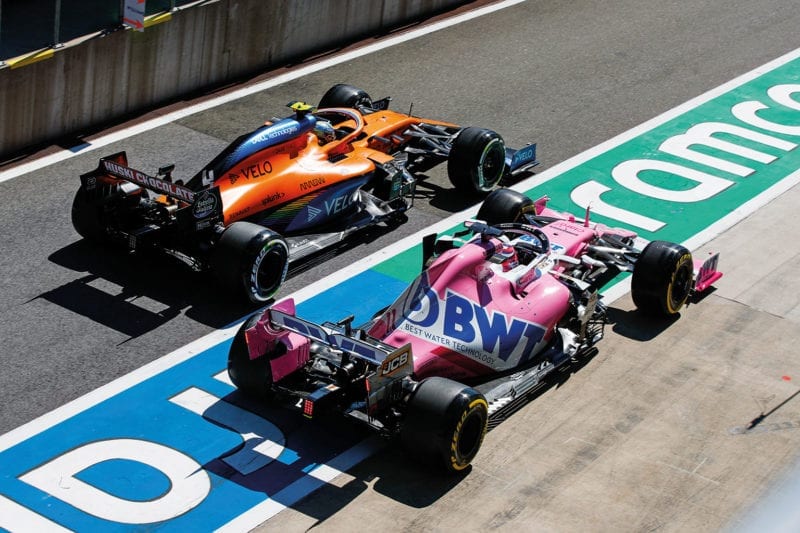
Class B leaders Sergio Pérez and Lando Norris go wheel-to-wheel in the pits during the Austrian GP. Lando eventually got the better of his rival and grabbed third on the dramatic final lap.
DPPI
But just beneath the cohesion, the competitive distrust inherent to F1 is very much alive. Red Bull’s anger at the Mercedes DAS system, Mercedes, Red Bull and McLaren’s anger at the private agreement reached between Ferrari and the FIA that brought the governing body’s investigation into the Scuderia’s 2019 engine to a close: these are still hot topics. As is the outrage of Renault and McLaren at the obvious similarity of the Racing Point RP20 to last year’s Mercedes W10. The ‘pink Mercedes’ looks quick enough to claim leadership of that ‘Class B’ part of the grid behind the big three, and that’s just making it all the more controversial. As this team prepares to morph into Aston Martin F1, with the Stroll billions behind it, a competitive 2020 season potentially makes it a
very attractive ’21 proposition for a big name like Vettel.
These are financially worrying times for all the teams, but McLaren and Renault have extra cause for concern through the troubles of their parent groups. They look likely to be slugging it out with Racing Point for the financially important positions in the constructors’ championship. McLaren has made unquestionably the best start, with Lando Norris scoring a superb podium in the Austrian opener, but Renault isn’t far away. Which means Renault’s Daniel Ricciardo will be potentially depriving his 2021 team (McLaren) of income in his efforts this year. He also faces a formidable new in-team challenge from the returning Esteban Ocon, a fast and very feisty performer. He was never a favourite of Ricciardo’s in the past – and under the circumstances there’s potential for friction.
Ricciardo’s forthcoming departure from Renault to join McLaren next year wasn’t greeted as warmly as was Carlos Sainz’s from McLaren. Carlos isn’t planning on joining Ferrari just to serve as Leclerc’s number two, but before then he will surely face increased competition from sophomore McLaren team mate Lando Norris. The bubbly, mischievous front of the 20-year-old belies a deep competitive will that’s rarely satisfied with his own performances, always chasing more. To keep that career momentum going, ‘more’ is exactly what he’s going to need, and similar comments apply equally to the other two sophomores, Alex Albon and George Russell. Being Max Verstappen’s team-mate in a potentially race-winning car in just your second season is perhaps the toughest driver gig of all, especially in the notoriously demanding Red Bull environment, but Albon has it within him to pull it off. It looks like Russell’s Williams will this year at least allow him to engage cars from other teams in battle as he swims confidently towards the goal of a drive in a fully competitive seat. He is highly rated at Mercedes and it’s difficult to believe he won’t end up there sooner or later.
This is a defining season for the sport, regardless of the competitive outcome. How it gets to that outcome, the thrills and intrigue along the way, will be crucial. This could be either the dying of the light or a new beginning. The stakes are that high.
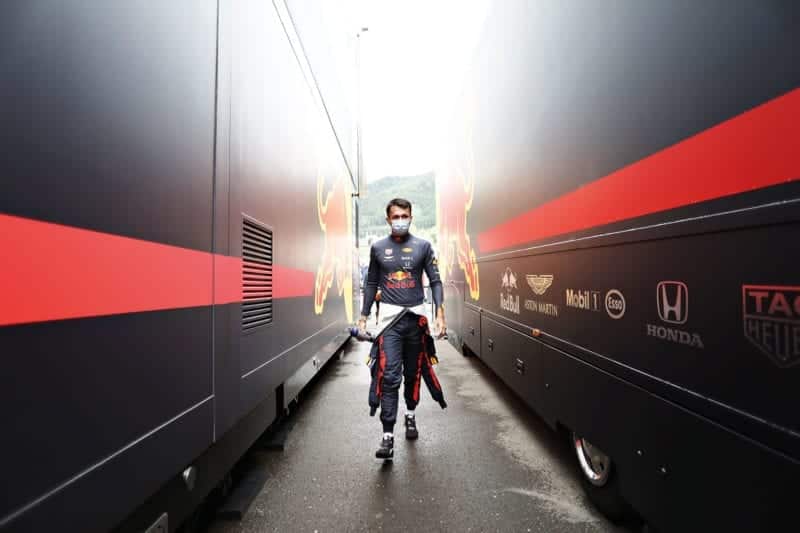
Albon fumes after another hit from Hamilton cost him a shot at his maiden podium in the Austrian GP.
DPPI
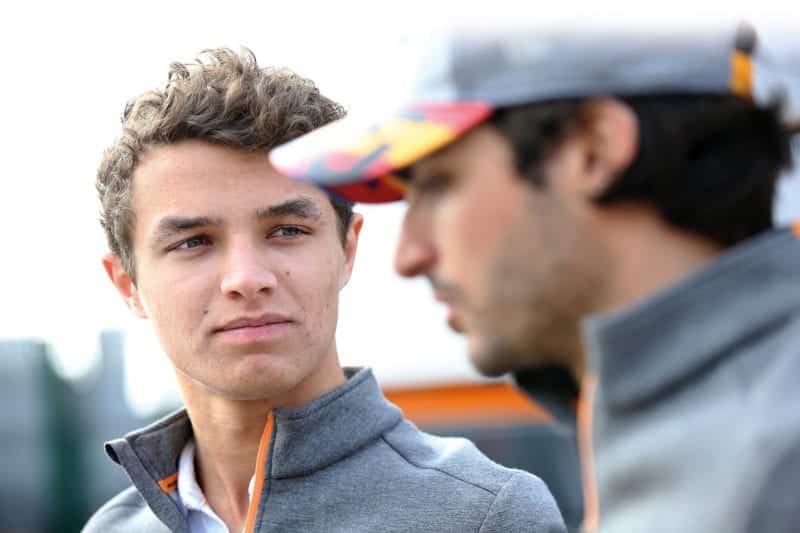
McLaren duo Norris and Sainz were among the current F1 stars to return to the wheel of junior formula machinery
Getty
There are plenty of weird statistics as a result of the COVID-19 pandemic, but what if I told you that 20 per cent of the current F1 grid all drove for the same team in June, and it wasn’t the one they race for?
In fact, it wasn’t an F1 team at all. Esports was great for drivers keeping their hand in, but when F1 announced its revised calendar and circuits started opening up again for private testing, there was little doubt that drivers needed to get behind the wheel of a physical car on a physical circuit. While almost everyone went karting, it wasn’t quite so easy to jump in an F1 car in order to prepare.
Enter Carlin. The famous name in junior categories has never made the step up to F1, but can boast the likes of current drivers Sebastian Vettel, Daniel Ricciardo, Carlos Sainz, Lando Norris, Kevin Magnussen and Daniil Kvyat among its alumni. Two of those names turned to Carlin for help getting back up to speed after lockdown, and many days in a Formula 3 car were actually instigated by a driver with a presence in the virtual world. “
We get on really, really well with Lando’s manager, a guy called Mark Berryman,” Trevor Carlin explains. “He’s absolutely got the right approach to sport as far as I’m concerned. He believes that the driver should be practicing as often as they can, because Roger Federer, top golfers and all these guys, they all practice every day.
“And it’s only because of the expense and logistics that racing drivers can’t do the same thing. So Mark’s always a big fan of Lando driving whenever he can to keep his eye in, keep him sharp and keep him focused, and we mentioned that we had the chance to use the Silverstone Grand Prix track and he absolutely jumped at it.”
That makes it all seem a little simple, but “had the chance to use” Silverstone actually equates to hiring the circuit out at a cost of £38,000 – including a £6000 noise premium – per day. So how do you recoup that sort of money? You get more drivers. Norris was joined by Sainz, Alex Albon and Nicholas Latifi of the current grid, while plans didn’t quite come off for George Russell. Williams reserve Jack Aitken also got involved, and for most their aim was simply to get used to pushing a car to the limit once again – Carlin was comparing lap times, being impressed that they all ended up within a tenth of each other – but Norris had some more specific targets as he took his McLaren engineers with him.
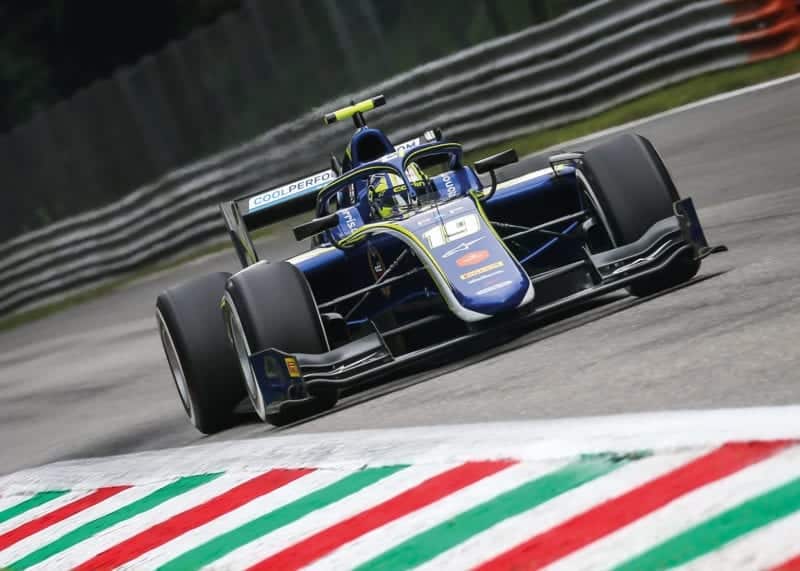
Lando in action with Carlin during Formula 2
DPPI
“Silverstone is one of the best tracks for it,” Norris says. “Racing with Carlos, racing with the others who went, it was nice. Also to see the Carlin guys and work with them again and have a bit of fun. The F1 stuff is very serious; there’s still laughs but it’s a job and you have to take it all very seriously. In this I could go have more fun.
“Doing whatever I can getting in a car to be ready for the weekend mentally, physically and any other way is important. Not having a test in an F1 car, I had to make the most of every chance, and that was going and doing three days in the F3 car.”
While Carlin also ran its current F2 pairing of Jehan Daruvala and Yuki Tsunoda and IndyCar driver Max Chilton, Albon hadn’t actually raced for the team before. Running what he describes as a GP3/F3 hybrid, the Red Bull driver says it was a good way to re-learn the feedback a racing car provides.
“A go-kart is good for fitness but a single-seater does feel very different,” Albon says. “It was nice to get that feeling back. That old-school ‘the steering doesn’t move because it’s so heavy’ sort of thing. But also just how raw it is. They’re so unrefined and so natural to drive. With F1 there’s so many electronics that it almost feels more like a simulator. Whereas when you drive whatever it was I drove, they feel pretty nice. I had a lot of fun.”
Some of the sessions developed into unofficial races – although Albon says he had an unfair straight-line speed advantage to the tune of 40kph – and while Carlin concedes he was slightly concerned at times, he insists that was outweighed by seeing the drivers’ emotions.
“It’s great seeing them when they got out of the car, big smiles – the pure joy of driving,” Carlin says. “Because there was no pressure. They had a blast.”
It was a unique time getting back on track, so Carlin doesn’t think such a test programme will happen again, even if he encourages it. “People have short memories and hopefully this whole thing [COVID] will disappear and we won’t have to think about it again, but in my mind if you’re a top-level sportsman you need to be practising your art as much as possible. And the person that does the most and has got the right level of skill, potentially will do the best. If you’ve got the resource and the opportunity, why wouldn’t you?”
